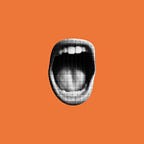This will not be the only post on Mark Fisher. We woke up on a cold early January day in 2017 to find out that he has taken his own life. It was only two years since we were fascinated by Ghosts of My Life: Writings on Depression, Hauntology and Lost Futures (Zer0 Books). The book alone had opened our eyes to beautiful and horrifying vistas of thinking. It was also a hub to a world of art that we had merely hitherto “consumed” — the biggest of which being Burial.
We are no longer mere enthusiasts of Fisher. We have nibbled the most significant chunk of K-Punk, his widely influential blog on a whole host of topics, and have revisited his Capitalism Realism as the name is increasingly heard on debate pods and articles. We have also read The Weird and The Eerie (Repeater books), his swansong, and a marvelous extension to Ghosts of My Life, but on a niche that probably no one else would have put under a magnifying glass.
Using the duality of two words that most of us use interchangeably, unaware of the subtle distinction, Fisher sets his flare into motion. He does not speak employing a theoretical cluster of words and concepts, but rather an education by examples. In effect, The Weird and the Eerie reveals itself through references to Lovecraft, H.G. Wells, the music of The Fall, Philip K. Dick, David Lynch, Tarkovsky, Nolan, Margaret Atwood, and a vast array of sources of…
The Noise of Time — Music, Culture, Lost Futures, Possible Futures, Degradation, Silver Linings, Vanity, Elegance, And Then Some More Music
